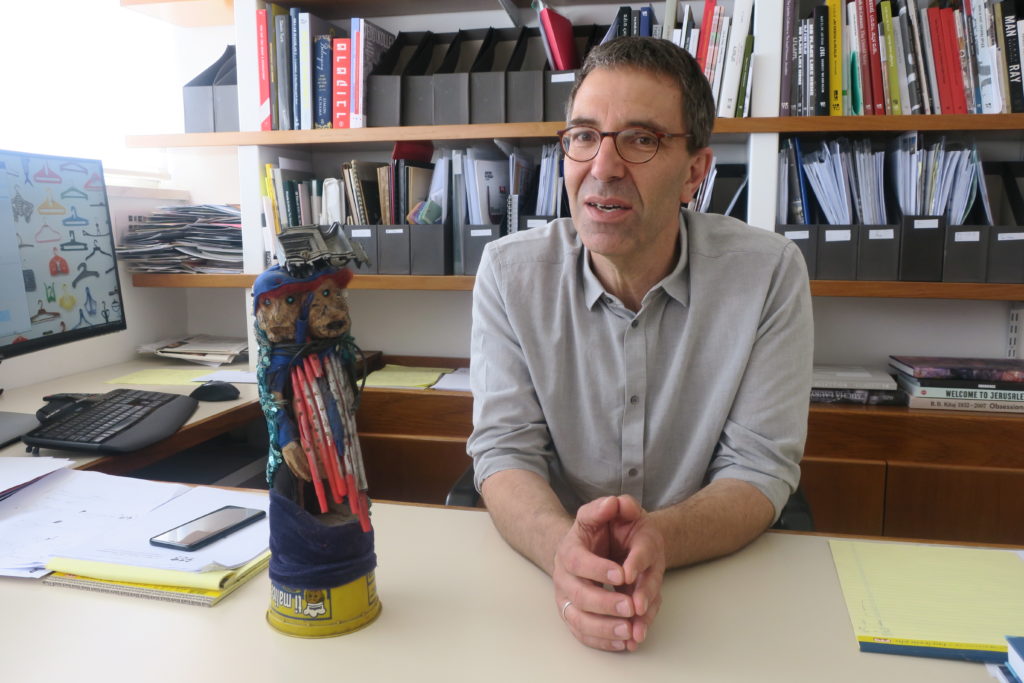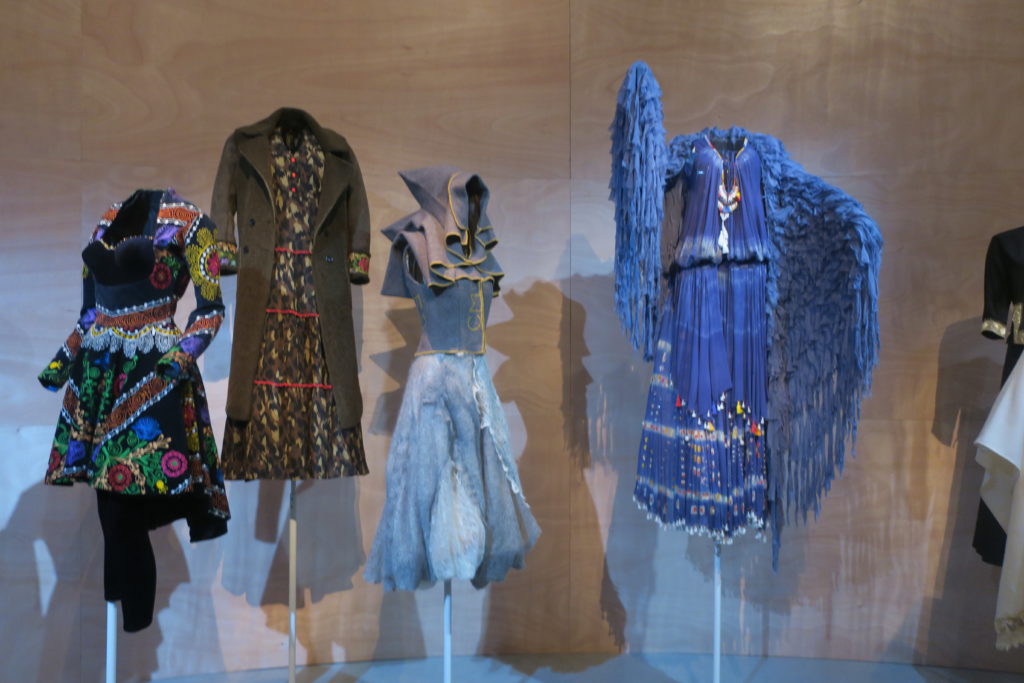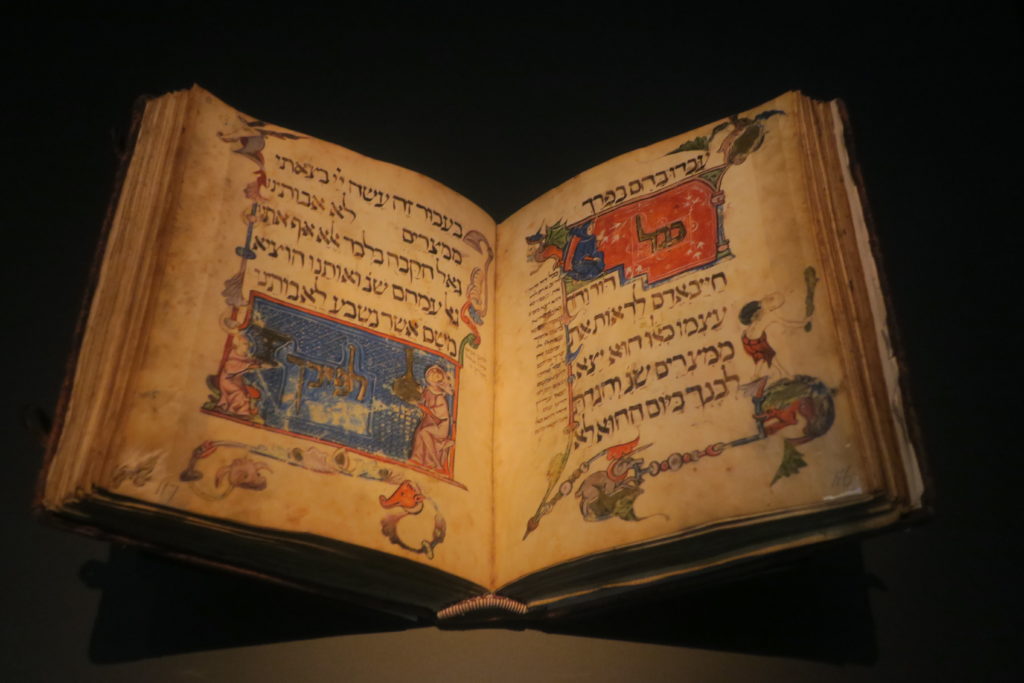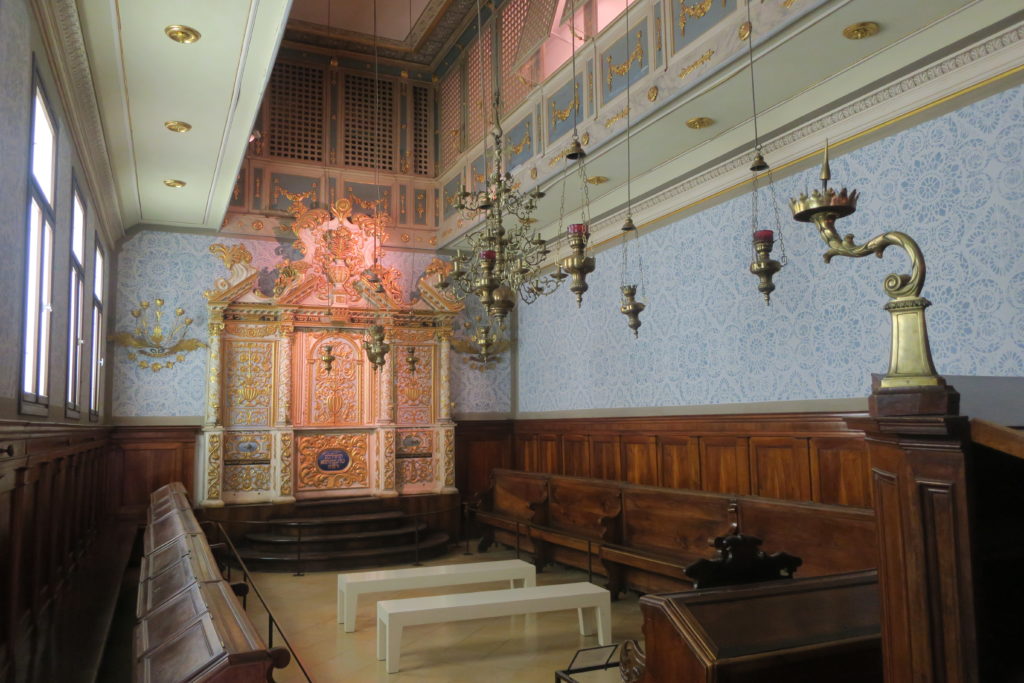Art World
‘I’m an Experiment’: Why the Israel Museum Hired Ido Bruno, a Tech-Savvy Designer With No Institutional Experience, to Be Its New Director
He hopes to court digital donations from Israel's high-tech Silicon Wadi.

He hopes to court digital donations from Israel's high-tech Silicon Wadi.

Menachem Wecker

It takes just five minutes of chatting with Ido Bruno, who was appointed director of the Israel Museum in Jerusalem last November, to channel his 25 years of design experience. He points to his immaculately arranged desk, which is a smorgasbord of alluring objects. A voodoo doll that Haiti’s former culture minister gave him stands near his computer, then there’s a piece of a stone ax from Papua New Guinea, and part of a loom that evokes an electric shaver, which Bruno found in the trash.
But the well-spoken Bruno wants to talk about the desk itself. “What is very common for designers to do is to say, ‘You don’t know this, but right here—right in front of you—is a new product,’” he says. “It’s a desk. It’s a car. It’s a mixer. It’s a medical instrument. It’s an exhibition. You don’t see it but I see it, and I’ll tell you what it looks like and what its characteristics and constraints are.’”
An iterative process ensues for designers, from prototyping to model testing to feedback refining the design. “My passion was in R&D, research and development. That type of thinking is really relevant to what I’m doing today,” he says. “It’s a type of thinking that involves flexibility.”
At a recent meeting of the museum’s international council, Bruno first referred to his new job as a roller coaster, but then corrected himself: It’s more like an undulating Chinese dragon, he said. “You jump on it. You ride it. You enjoy the view, and as you move along, you see things and you hear things,” he says. “It’s a big ship. It’s very rich in many ways. It’s very diverse.”
Whereas US designers tend to specialize, an Israeli one might be involved in everything from automotive to exhibition design—and it’s that kind of Renaissance-man approach that Bruno brings to his museum directorship. He’s planning new ways to fund-raise digitally; he immediately partnered with New York’s Frick Collection to bring a Francisco de Zurbarán exhibit to town—which had a strong biblical basis, so museum texts included relevant verses in the original Hebrew—and he’s trying to find ways to broker better exchanges between Israel’s high-tech industry and its cultural institutions.
“I think I’m an experiment,” he says laughing. “Once we decide that this is successful, then maybe we can market this experiment to other places.”

A fashion exhibition at the Israel Museum. Photo: Menachem Wecker.
At the Israel Museum, Bruno is filling very large shoes, which were held for two decades by James Snyder, known for his fund-raising prowess. His replacement, Eran Neuman, lasted mere weeks, and Bruno replaces the museum’s interim director of six months, Ayelet Shiloh Tamir. When the museum reopened its search, it came to focus on Bruno, who, like the biblical King Saul, initially declined.
Several news reports, including in the New York Times and Haaretz, have speculated that Neuman didn’t work out because Snyder wasn’t willing to turn over the institutional reins sufficiently. (Although Snyder holds no official museum role, he is international president of the American Friends of the Israel Museum, a role set to expire at year’s end, Bruno says.)
Bruno recalls that the search committee chair, Yitzhak Molcho, who has a reputation as Israeli Prime Minister Benjamin Netanyahu’s right-hand man, told him over coffee that the museum knew Bruno had no official management experience, wasn’t an experienced fund-raiser, and hadn’t managed large cultural projects.
Molcho told Bruno that “‘the museum is at a crossroads, and we want to look 10, 15 years ahead, and for that, we need a person who we think is more like you.’ That is a very tempting proposal to put in front of someone like me. I’m a dreamer. I like challenges, and also, there’s this sense of responsibility.”
Ultimately, Bruno was sold on a “negative of this Groucho Marx thing,” he says. “If this club invites me, and it allows itself to invite someone with my profile, which is definitely not the usual museum director profile, it does suggest that this place is chafetz chayim. This is really the term I would use: ‘It wants to live.’ It really wants to renew itself in this way and look ahead.”
A Jerusalem native, Bruno has spent his whole life in Israel, save a few years in childhood when his father guest lectured at Harvard and MIT. Bruno, who was born two years before the Israel Museum was founded, in 1965, recalls being inside a Henry Moore sculpture as a child on a visit to the museum with his mother, an art therapist. “It’s a reclining woman, and it’s actually like being inside a womb,” he says. “It sounds almost like a kitsch thing, but it’s true. It’s really being inside or covered and engulfed by art, and it’s a physical thing. It’s not a rational thing.” The experience, and his recollection of it, convinced him that museums need to engage visitors on an emotional basis.
Bruno, who spent 25 years teaching at Jerusalem’s prestigious Bezalel Academy of Arts & Design, also ran a design firm, which made international headlines for an earthquake-proof desk that Bruno collaborated on with a former student. The desk promises to save lives in places like Haiti and is affordable for schools. Bruno had also curated exhibitions, but hadn’t previously managed an institution, particularly one as large as the Israel Museum, which is home to some 500,000 objects, including the Dead Sea Scrolls.

A Passover haggadah at the Israel Museum. Photo: Menachem Wecker.
After serving in the Israel Defense Forces and taking some time to travel the world, Bruno went to work on cultural projects in Jerusalem’s Jewish quarter. For a year, he worked at the Israel Museum installing and maintaining stands and plinths to hold Chalcolithic-period pieces, which inspired him to study design.
Today, Bruno sees his directorship as a civic duty. “There’s this sense that this place is not to be taken for granted,” he says of Israel. “If you feel that something is important, you contribute to it more than just as a job.”
Although Israelis generously donate their time, the country lacks a strong culture of donating financially to cultural institutions, according to Bruno. The government contributes 15 percent of the Israel Museum’s budget, tickets and events generate 25 percent, and donations make up the remaining 60 percent.
“The Israel Museum is not the national museum, although a lot of people consider it that,” Bruno says.
Donations for cultural institutions are declining, Bruno says, and younger Israelis in particular don’t tend to donate to the museum’s main wheelhouse areas: art, archaeology, and Judaica. Looking forward, Bruno is focused on creating new income streams for the museum, both in geographical areas where it has typically been weak—including Jewish communities in South America—and in Israel’s strong high-tech industry.
The tech industry is a tough sell, however. “People here would contribute their time rather than their money, and if they contribute money, they would do it more to things that have to do with the army or hospitals, or things that are more of an emergency-type,” he says. “A lot would go to education rather than culture.”
Bruno is optimistic that he can convince Israel’s high-tech industry—its so-called Silicon Wadi—to see a stronger connection between the culture world and technology.
Tech and creative industries have merged, and that can lead Israelis in high-tech to see investment opportunities. Bruno also aims to harness micro-philanthropy platforms, like Kickstarter, to foster donations. “You have to understand them in a deep way to work with them,” he says. “A museum is not like a new gizmo for your phone.”
To do that, he envisions engaging young visitors, who take selfies in the museum with art in the background, to turn their phones around and use them to learn about the art. Image-recognition technology could identify specific works, about which the Israel Museum could push content out to visitors’ phones in educational and commercial ways.
Phones could help visitors better understand the objects and their context, or the museum could suggest purchasing a placemat with a reproduction of the object in the museum shop. Or it could offer visitors a virtual tour of other objects by the same artist that are in storage.
“It’s not a brochure and it’s not a guide,” Bruno says. “This is something different.”

A recreated synagogue at the Israel Museum. Photo: Menachem Wecker.
If museum staff are sensitive and careful, the designer-director believes, they can make a digital ask of visitors to contribute small sums toward conserving a particular work, for example. “That, I think, is a way that you can start working differently than going to very rich people and saying, ‘Give me a lot of money to help me keep this place going,’” he says. “I believe that everyone is thinking about it. I haven’t seen anything out there.”
There are certainly challenges ahead, as Bruno aims, rather optimistically, to try to change his country’s culture of philanthropy. But if he and colleagues can manage it, it wouldn’t be the first time a miracle was reported in the Holy Land.